- Home
- Antonia Fraser
Royal Charles: Charles II and the Restoration Page 18
Royal Charles: Charles II and the Restoration Read online
Page 18
Charles was correct. Later the butler of the house, one John Pope, who had been in King Charles I’s household before the Civil War, confided his suspicions privately to Jane Lane. But it turned out to be a felicitous encounter: Pope swore loyalty to the King, an oath he would keep most strictly, proving himself a resourceful and loyal servant.
*
Once again the royal party was faced with the question: whither? Pope tried in vain to find a ship at Bristol. The government would be watching the Welsh ports. Better to strike southwards, where, it will be recalled, the Western Association provided one of the few genuine Royalist networks in England, other than the Catholic underground. One of the sleepy south Dorset ports would provide the kind of inconspicuous transport to the Continent which would suit the party’s purposes. As their base, they would use Trent Manor in Somerset, home of Colonel Francis Wyndham, a founder of the Western Association and, as the brother of the former Governor of Bridgwater, a member of a family with long Royalist connections.
Of course, Jane Lane was still needed to cover the journey, and there was a distressing last-minute hitch when her sister gave birth to a still-born child; it seemed a heartless moment to be leaving her. In the end it was the King who devised the excuse: a fictitious letter from Colonel Lane, pleading illness and summoning his daughter back to his side. Wilmot wrote ahead to warn Wyndham: they all realized that he would know nothing of what had been going on ever since Worcester. It was now Tuesday, 16 September, the day on which the Council of State issued new instructions to the Committee of Examinations ‘to use the best means they can for the discovery of Charles Stuart’. That vagueness of language showed that the government too were in the dark: this imprecision would pervade their announcements for a week or two.
And it was pure bad luck that, in the event, the King could not make his escape from the Dorset coast, for the planning was good, and the geographical area was far more promising than the perilous Midlands or the conspicuous Welsh Marches. The reason for the eventual failure was the coincidental Commonwealth campaign against Charles’ old refuge, Jersey. As a result, the so-called sleepy ports of Dorset and Devon had been transformed, and there were a quite unaccustomed number of Commonwealth troops in the area.
At Trent Manor, however, lying in a lost village between high banks and steep lanes, they were not to know of this development. Trent was two or three miles north of Sherborne: it was (and is) in exceptionally deep country. You would have to know your way to find it. The manor was next to the village church: not a very fortunate locale. For when the bells began to peal unexpectedly, and Charles was sent to know the reason, he was told it was for the ‘joyful news’ of the King’s death.
In happier days he might have observed, like Mark Twain, that the news was much exaggerated: the wit was quite in keeping with his own. In fact, all the King said at the time was, ‘Alas, poor people!’ It was a pleasanter moment when he greeted Colonel Wyndham on arrival: ‘Frank, Frank, how dost thou do?’ Frantic enquiries were immediately set in hand for a boat, for it was the same problem: how long could the King remain, without word of his whereabouts getting out? Charles divided his time between yet another hidey-hole (bequeathed by the Wyndham’s Catholic ancestors, the Gerards) and the Colonel’s mother’s chamber, the most retired room in the house.
Lyme – the Regis came later, as a reward for its loyalty – was the obvious port for the getaway. It was small, but not too small, and there were plenty of boats sailing in and out of it, plying trade with the Continent. Henry Peters, the Colonel’s valet, was entrusted with the commission, and he entered into negotiations with a Captain Ellesdon for getting away a mythical party of gentlemen, one of whom was said to be fleeing from his creditors.
Some confusion surrounds Ellesdon’s subsequent behaviour: he found it necessary to rebut accusations of treachery after the Restoration. It was alleged that his wealthy Presbyterian wife had corrupted him. But Clarendon accepted Ellesdon’s innocence.11 He certainly showed every initial sign of trying to help the fugitives; and the strongest proof that he did not change his mind, on discovery of the King’s identity, is the fact that Charles continued to elude capture. Ellesdon was assuredly in a position to put the finger on him most efficiently, had he wanted to do so.
Since there was a fair at Lyme, Charmouth, a nearby fishing village set in the wide bay which ends at Bridport, was selected. There, on Monday, 22 September, it was finally arranged that one Limbry, the master of a coasting vessel, would convey them to France for £60, although the tide would not let him sail until eleven o’clock that night. Peters, a practical man, immediately engaged a room in a Charmouth inn where the King and Wilmot could lurk; as a romantic, or at least a person of imagination, he explained the need for this limited late-night rendezvous by saying that he was assisting a runaway bridal couple from Devonshire.
Charles had said goodbye to Jane Lane. He arrived at Charmouth that night, riding double with another young lady, Juliana Coningsby, a Wyndham cousin. Her existence gave plausibility to the wedding story at the inn. Charles had already met Ellesdon at a lonely house in the hills behind Bridport which cut off the coastal strip. He gave him a gold coin through which he had personally bored a hole – one of the activities with which he whiled away the confined hours at Trent Manor.
With the King and Miss Coningsby in the inn at Charmouth, Wyndham, Peters and Wilmot went down to the shore and awaited the ship. Nothing happened. The tide came in, went out, and there was not a trace of Limbry. Cold, disconsolate and perplexed, they were forced in the end to return to the inn and confess failure. The reason for Limbry’s non-appearance was in fact a quite ridiculous marital escapade: his wife, aware of the government’s proclamation about Royalists, suspected Limbry as being up to no good with his nocturnal project (although she did not conceive it was the King he was helping). She followed him, and ended by locking him in his bedroom. In vain the captain raged. She would not budge.
In the absence of any explanation, however, the royal party were left with the problem of their next move. It was Charles, characteristically, who thought it the best course to head for Bridport, a much larger town, and stuffed with troops on their way to Jersey and Guernsey. There he could go ‘blundering’ among the soldiers and keep his rendezvous with Wilmot. Suiting the action to the word, he pushed his way through the concourse to the largest inn, with his horse, annoying the troops in the process. Bearing in mind that Charles had spent much time in the West Country only six years before, this must have been his moment of maximum danger, excepting only the session in the oak. He could not rely on the anonymity he had enjoyed in the Midlands. One ostler did remark that his face was strangely familiar. Charles kept cool, even when he discovered that the ostler had worked close to the house of a Mr Potter who had entertained the Royalists at Exeter during the Civil War.
‘Friend,’ he replied easily, ‘you must certainly have seen me then at Mr Potter’s for I served him above a year.’ The two ‘servants’ parted with jolly vows to drink a pot of beer together at their next meeting. In spite of all this bravado, when Wilmot, based at another inn, joined Charles, they decided that the best course was to get back to Trent Manor. There in effect they would start all over again.
In the meantime the danger of discovery had not diminished. Another ostler, that of the Charmouth inn, had become very suspicious as he pondered on the horseshoes of the royal party, those luggage labels of the past. He recognized one as having been forged in Worcestershire. A servant who had been kissed by the King was told sardonically that she was now ‘a maid of honour’. Luckily the ostler was a pious Presbyterian and took a long time at his prayers. By the time the hue and cry was raised, and the local magistrate had alerted the troops, the scent had gone cold. The soldiery set off in the direction of Dorchester – that is, to the east of Bridport.
But the King, Wyndham and Wilmot were by now about five miles north. As a matter of fact they were lost; Wyndham had to ask the name of the villag
e where they decided to spend the night (it was Broadwindsor). Here, occupying upper rooms under false names, the King and his party got involved in a hilarious caper, since by complete coincidence a party of about forty soldiers on their way to Jersey also decided to put up in and around the same inn. One of their female followers gave birth to a baby during the night: the village was selfishly concerned that the baby should not be abandoned there, as a charge on the parish. In the hullabaloo which followed the presence of the King remained undetected.
By the next night, 24 September, the King was back at Trent Manor; here he was to remain for the next two weeks while deliberations were made for the next throw. Trent Manor was later described by Colonel Wyndham’s wife Anne in her account of the King’s escape as ‘the Ark in which God shut him up when the floods of rebellion had covered the face of his dominions’.12 His Ark certainly kept him safe enough. The odd rumour that there was an escaped Royalist staying there was scotched by Wilmot appearing at church with Wyndham; if there was any Royalist about, it was Wilmot. In between, Wilmot was busying himself about the Salisbury area, negotiating for a boat somewhere along the south coast.
In the end, it was found necessary to go as far as Sussex for the sake of safe embarkation, the Jersey campaign having ruled out Southampton. On Tuesday, 6 October, considerably rested, the King set out yet again with Juliana Coningsby on a double horse. He was heading for Heale House, near Amesbury, the home of Mrs Amphillis Hyde, ‘a worthy discreet loyal lady’ and the widow of a cousin of Edward Hyde, as the first step on his journey. For all her discretion, Mrs Hyde created a moment of tension at dinner by pressing her attentions on the King, which was extremely tactless in view of his deliberately dingy clothing. But there was a good day spent at Stonehenge: ‘We stayed looking upon the stones for some time,’ as the antiquarian Charles told Pepys, before the royal party doubled back to Heale House.
In all, Charles was there five days, using yet another hidey-hole: it was no wonder that the King, once restored, would be a prey to claustrophobia, and that sauntering in parks at his ease would be his idea of daily recreation.
It was not until 13 October that Charles was able to set out on his adventures once again with the hope of a Sussex boat. Wilmot had contacted a useful ally, Colonel Gunter of Racton, near Chichester, one who exclaimed, ‘God be blessed!’ when told that the King was well and safe. Charles spent the night on the way with Gunter’s sister at Hambledon in Hampshire. Her husband, not being in the secret, became gravely worried by Charles’ short hair, lest it denote ‘a roundhead rogue’. On the next day Charles finally reached Brighthelmstone (as Brighton was then known) and was installed at the George Inn, on the site of the present King’s Head in West Street.
Now everything seemed to be going smoothly. Gunter had fixed up a boat with a merchant named Francis Mansell, by the simple expedient of getting him drunk: the payment was to be sixty pieces of silver. Officially, his cargo was billed as a party of illegal duellists. The master of the promised brig, Captain Tattershall, also met the King. He recognized him immediately, perhaps because Charles’ disguise had gone up in the world. From a servant he had turned into ‘something like the meaner sort of gentleman’. The Captain held his peace until they were alone, and then fell to his knees and kissed the King’s hand, declaring that he hoped to be a lord and his wife a lady when the great day came.
The rendezvous was for nearby Shoreham: Charles spent his last night in England at Bramber, a little village just to the north of it. Yet even at this stage there was danger: Charles narrowly escaped running into some Commonwealth soldiers in the area. But he did finally make the appointed hour at Shoreham harbour.fn8
And so at last it came about. On Wednesday, 15 October, at four o’clock in the morning, King Charles II finally departed England’s shores. He had been on the run for six weeks; he had slept on pallet beds, slept in trees, crouched in innumerable hiding-places, his lanky frame doubled up in holes for recusant priests, his large body fed by the food of the poor. In all this time, his spirit never failed. Colonel Gunter, the last of his protectors, made the same point: he was amazed at the King’s unwavering courage – that he never showed the slightest sign of apprehension. The Colonel compared the King to Elisha: his eyes must surely have been opened by God, to glimpse a heavenly host all around him. Moreover, more mundanely, they had got him away in the nick of time. Only two hours after Charles left, a very different boat was searching all around – for ‘a tall black man, 6' 2" high’.
But by this time, by the mercy of Providence (and it is difficult to leave out the part of Providence in this extraordinary story of hair’s-breadth escapes and near misses) the King was at sea. The brig was named The Surprise. She headed in the first instance for the Isle of Wight, on the excuse of selling coal along the south coast: she had originated at the coal port of Pittenweem, where it will be recalled that Charles had been lauded after his Scottish coronation – was it only six months before? His identity on board seems to have been an open secret. A sailor impudently blew the smoke of his pipe in Charles’ face and, on being reproved, retorted that a cat might look at the King. Nevertheless, Tattershall was careful to cover his tracks – after all, he had a living to make under Commonwealth sway. Some of the sailors were bribed to persuade Tattershall to change his route so as to set down these so-called ‘merchants’ in France, and the Captain duly allowed himself to be publicly convinced.
The journey was a straightforward one. The wind blew from the north all night long, so that the brig merely had to run before it. Just before dawn the French coast came into sight. There was one more alarm – the look of a ship which might have been a privateer. The King and Wilmot were put into a cock-boat, manned by a Quaker named Carver, who was the brig’s mate. It was Carver who finally carried Charles ashore on his back, at Fécamp, near Rouen.fn9
With many other good deeds, that of Carver would be remembered at the Restoration, along with the common sense and kindness of Jane Lane, the sterling worth of Huddleston and Wyndham, the enterprise of Gunter, the nobility of the Penderels, and on down the list of sixty people who knew something about the escape. Even Mansell, who had provided that Shoreham ship under the influence of alcohol, received a pension. The Surprise itself survived to be turned into a yacht and renamed the Royal Escape. One list of people to be rewarded was drawn up in the King’s own hand; it included ‘the gentleman in whose house I was first received, whose name I have forgot’ (Charles Giffard).14 But the man himself was not forgotten, nor was the experience.
Gratitude would come like a golden shower. Jane Lane’s benefits included a watch from the King himself, a jewel worth a thousand pounds (which was proposed during a debate in the House of Lords) and a yearly pension of a similar amount. The loyal Penderel brothers were introduced at Court after William had impetuously greeted the King in St James’s Park; their children were assisted; they too received pensions, granted in perpetuity.
Opportunity for that gratitude lay far ahead.
One contemporary likened the escape of King Charles to the feat of David vanquishing the Goliath Cromwell.15 The parallel was not exact. While the King had certainly escaped against enormous odds, England still lay in the grip of Goliath. But Charles could at least echo the words of David: ‘Thou hast delivered me from the violent man; therefore I will sing praises to Thy name, O Lord.’
On the very day of his embarkation, the Earl of Derby, last seen before dawn at Whiteladies, was executed. Had he been captured, Charles Stuart the younger, a tall black man over two yards high, would likely have met the same fate.
1 There have been many fictional versions of the escape, from Sir Walter Scott’s Woodstock to Georgette Heyer’s Royal Escape. None of them are more exciting than the true story.
2 There is a clear recent summary of the subject and the sources in Richard Ollard, The Escape of Charles II, 1966. The main sources are most accessibly printed in Allan Fea’s two volumes, The Flight of the King, 1897, and After Worc
ester Fight, 1904. In Charles II’s Escape from Worcester: A Collection of Narratives Assembled by Samuel Pepys, edited by William Matthews, 1966, Father Huddleston’s original account – A Brief Account of His Majestie’s Escape from Worcester, etc. – is printed for the first time.
3 One previous Giffard had played a part in Royal Stuart fortunes: a sixteenth-century scion of the family had acted as a double-agent in the sad story of the Babington Plot, resulting in the betrayal of Mary Queen of Scots. The seventeenth-century Giffards fully atoned for this blot on their history.
4 In exile the King became, no doubt as a result, a lavish orderer of shoes, which had to be specially made in Paris. He was also very careful about their fit. In July 1656 they were to be ‘a little bigger than last time’. He remained aware of others’ problems in that direction: in 1683 he commented on Sir John Reresby’s thin shoes and told him to get a stronger pair so as not to catch cold.5
5 The balance of the evidence suggests that this particular tree is actually a descendant of the royal oak, a successful sapling rather than the oak itself. Sightseers took their toll of the original tree, reported in 1660 as being of ‘a firm sound trunk … its deserved popular growth to outlast time itself’. A wall had to be built, later replaced by a palisade. Eighteenth-century accounts describe the growth of a sapling near by, as well as the dilapidation of the original tree. Later accounts describe two trees, then only one.7
6 The author has traced several local continuances of this pleasant practice to the present time. The Royal Stuart Society also regularly celebrates 29 May with a dinner, and the various houses of the King’s refuge hold ceremonies from time to time, associated with the descendants of his helpers. Founder’s Day at the Royal Hospital, Chelsea, will be referred to later.
7 Probably not at Bromsgrove, as is generally stated, but at Longborough, according to the convincing recent research of Mr J. F. Downes in his unpublished manuscript The Strawberry Roan.

 Warrior Queens
Warrior Queens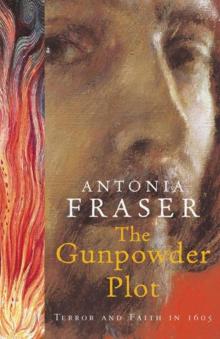 The Gunpowder Plot
The Gunpowder Plot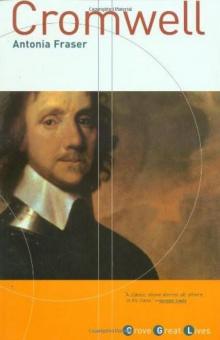 Cromwell
Cromwell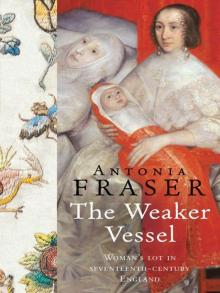 The Weaker Vessel: Women's Lot in Seventeenth-Century England
The Weaker Vessel: Women's Lot in Seventeenth-Century England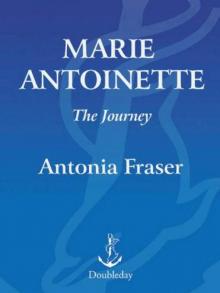 Marie Antoinette: The Journey
Marie Antoinette: The Journey Oxford Blood
Oxford Blood Your Royal Hostage
Your Royal Hostage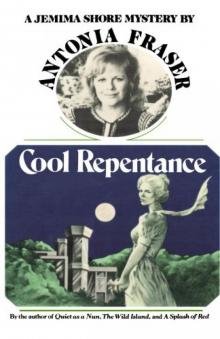 Cool Repentance
Cool Repentance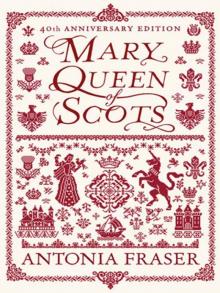 Mary Queen of Scots
Mary Queen of Scots Political Death
Political Death Royal Charles: Charles II and the Restoration
Royal Charles: Charles II and the Restoration My History: A Memoir of Growing Up
My History: A Memoir of Growing Up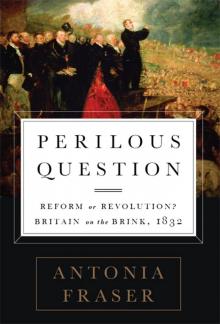 Perilous Question: Reform or Revolution? Britain on the Brink, 1832
Perilous Question: Reform or Revolution? Britain on the Brink, 1832 Jemima Shore at the Sunny Grave
Jemima Shore at the Sunny Grave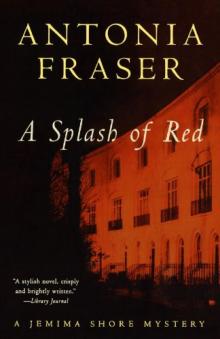 A Splash of Red
A Splash of Red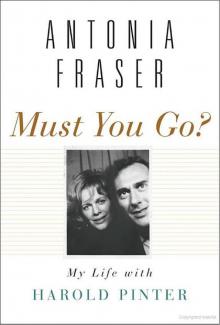 Must You Go?: My Life With Harold Pinter
Must You Go?: My Life With Harold Pinter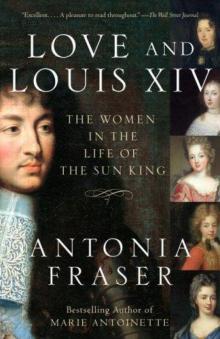 Love and Louis XIV: The Women in the Life of the Sun King
Love and Louis XIV: The Women in the Life of the Sun King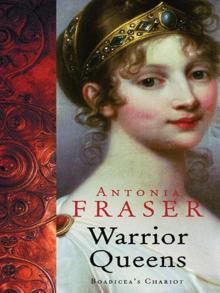 The Warrior Queens
The Warrior Queens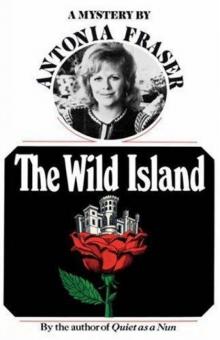 The Wild Island
The Wild Island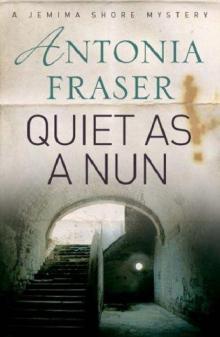 Quiet as a Nun
Quiet as a Nun Perilous Question
Perilous Question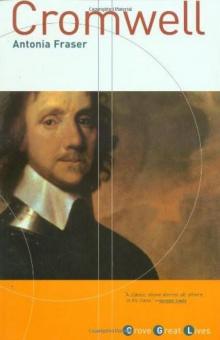 Cromwell, the Lord Protector
Cromwell, the Lord Protector Gunpowder Plots
Gunpowder Plots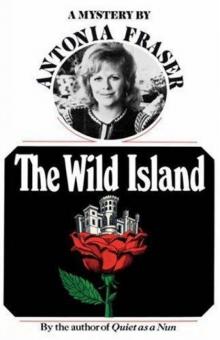 The Wild Island - Jemima Shore 02
The Wild Island - Jemima Shore 02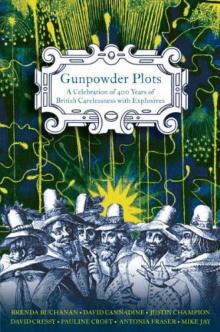 Gunpowder Plots: A Celebration of 400 Years of Bonfire Night
Gunpowder Plots: A Celebration of 400 Years of Bonfire Night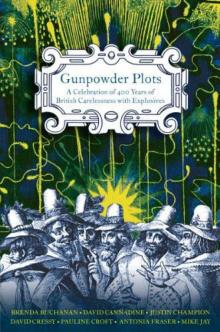 Gunpowder Plots_A Celebration of 400 Years of Bonfire Night
Gunpowder Plots_A Celebration of 400 Years of Bonfire Night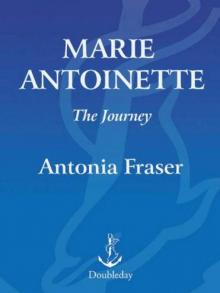 Marie Antoinette
Marie Antoinette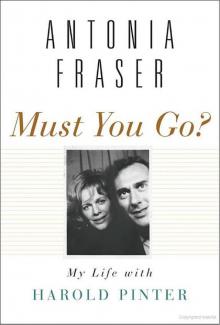 Must You Go?
Must You Go? My History
My History